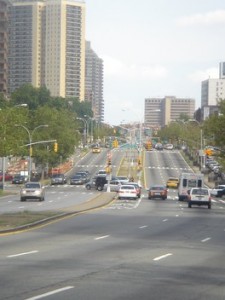
Queens, the city’s largest borough by area, is home to more than 2 million people who hail from almost every country in the world. Many parts of the borough are densely populated and the arterial roads that connect neighborhoods are the most dangerous.
Over the next couple of weeks we’re highlighting the five worst intersections in Queens — which aren’t all on Queens Boulevard — to demonstrate some of the perils of everyday life. We’ll explain how they can be avoided and recommend steps to take if something happens. These steps can include seeking immediate medical attention and speaking with a personal injury lawyer in New York City to understand your options.
The worst intersection is Queens Boulevard and 69th Street in Woodside, where seven collisions happened in 2014, according to NYC Open Data. Between 2005 and 2009 101 people in total were injured and 1 cyclist perished. The intersection, near the Long Island Railroad overpass is the site where north-south roads feed the boulevard with traffic from Elmhurst and Jackson Heights to the north and Maspeth to the south. The situation is complicated by the on off ramps for the Brooklyn Queens Expressway. Queens Boulevard is a truck route and used by about 20 bus lines.
In 2010, the DOT expanded medians and islands to shorten crossing distances and provide refuge from vehicle traffic.
Cyclist James Langergaard was killed by a Volkswagon Jetta at the intersection in Aug. 2009. According to a Daily News article he rushed through as the light turned red. Other cyclists noted that yellow lights changed too quickly on the boulevard.
The 1.3 mile corridor from Roosevelt Ave. to 73rd street, saw 591 injuries over the past five years, but now it’s due for a redesign, according to the Queens Chronicle. The DOT’s plans for the stretch include reducing highway-like features, which encourage speeding, and discouraging “roadway shopping,” or enabling cars to switch between the main lanes and the service lanes, easily. There are also plans to add a bike lane, a feature in high demand.
This intersection contains many features we know to be problematic, but the best things any good driver or pedestrian or cyclist can be are alert and cautious. This is statistically the worst intersection in Queens, but many others contain similarly dangerous features. Over the coming weeks, we will examine those as well.

